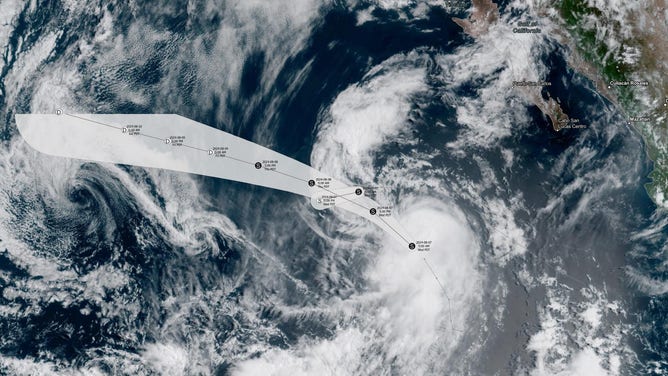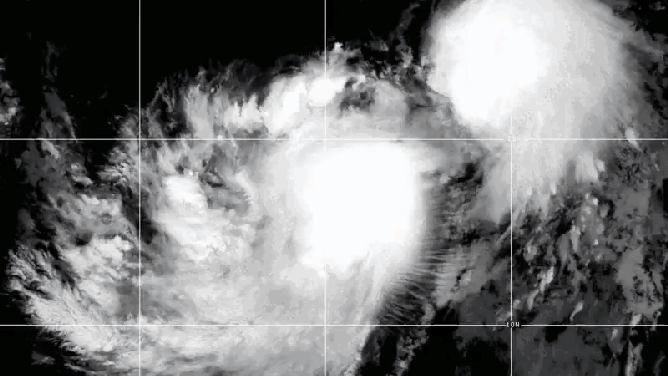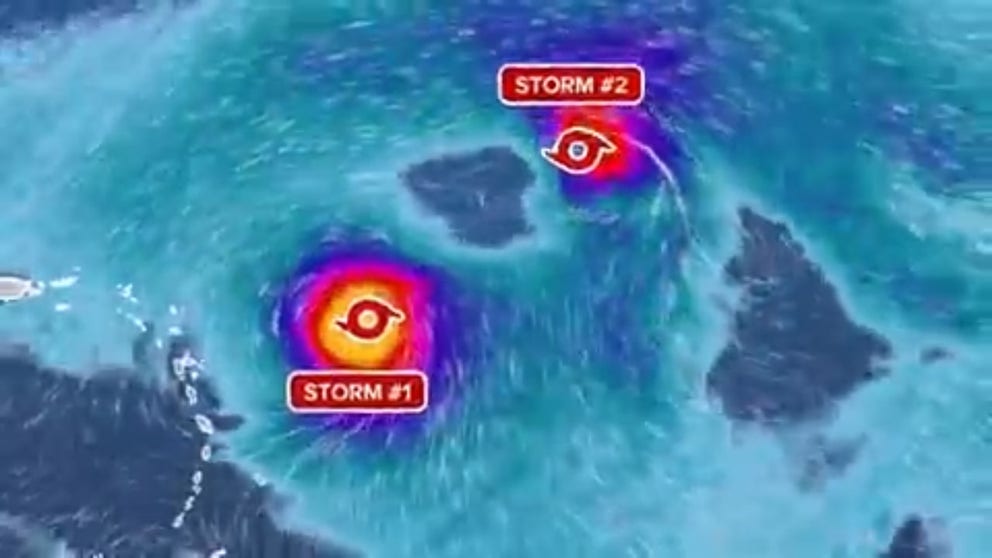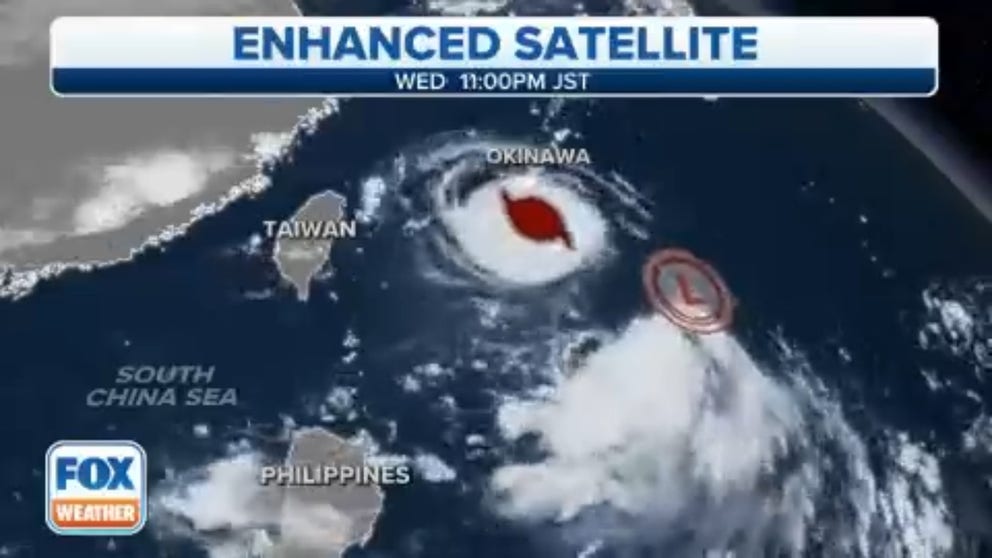Watch: Tropical cyclones do rare dance in eastern Pacific
The Fujiwhara Effect was named after Japanese meteorologist Sakuhei Fujiwhara, who observed the phenomenon in 1921. The effect does not occur every year but is more likely to happen over the Pacific than over the Atlantic. Other weather events, such as tornadoes and areas of low pressure, can exhibit similar patterns.
Fujiwhara Effect explained
FOX Weather meteorologist Jane Minar explains the Fujiwhara Effect.
Tropical Storms Emilia and Fabio in the eastern Pacific came close enough to each other that the rare Fujiwhara Effect was on display between the coasts of Hawaii and Mexico.
The phenomenon occurs when two tropical cyclones approach each other, causing them to orbit around a common center.
The Fujiwhara Effect is rare because cyclones are usually sheared apart or dissolved before starting their rotation.
If cyclones maintain the right speed and angle of movement, they can circle each other for hours, if not days, around a point known as the barycenter.
In the case of Emilia and Fabio, the effect was short-lived, with the rotational center located hundreds of miles off the coast of Mexico.

Tracks of Tropical Storms Emilia and Fabio in the eastern Pacific
(NOAA)
IS IT A TWO-NADO? 7 WEATHER PHENOMENA THAT WILL HAVE YOU SEEING DOUBLE
According to NOAA, the cyclones need to be less than 860 miles from each other to begin rotating around a common core.
After a pair of cyclones enters the Fujiwhara Effect, they may either be ejected to follow different trajectories or gradually become absorbed into each other.
The latter scenario is more common, with the larger cyclone usually becoming more dominant and absorbing the weaker storm system.
In the most recent case in the Pacific, Emilia was expected to absorb Fabio, effectively ending the remnants of the former cyclone.
The Fujiwhara Effect is not new but wasn’t identified until the early 1920s.
It was named after Japanese meteorologist Sakuhei Fujiwhara, who observed this pattern with a pair of cyclones in the Pacific in 1921.

Emilia and Fabio perform the Fujiwhara Effect in the eastern Pacific
(FOX Weather)
The phenomenon is more common in the western Pacific, where there is more real estate for typhoons to dance among themselves.
Typhoon Hinnamnor provided a textbook example of the Fujiwhara Effect in 2022, when a weaker area of low pressure danced around the cyclone until it became fully absorbed.
After absorbing the area of disturbed weather, the cyclone affected countries such as Japan, Taiwan, South Korea and Russia and caused extensive damage.
Other weather events, such as tornadoes and areas of low pressure, can exhibit similar patterns, where one feature becomes dominant and overtakes the other.
Cooler waters in the Pacific, along with low humidity values, were expected to end Emilia’s lifecycle over the next few days.
Typhoon Hinnamnor demonstrates the Fujiwhara Effect
Hinnamnor, a powerful hurricane moving toward Japan, demonstrated an interesting phenomenon called the Fujiwhara Effect this week.

